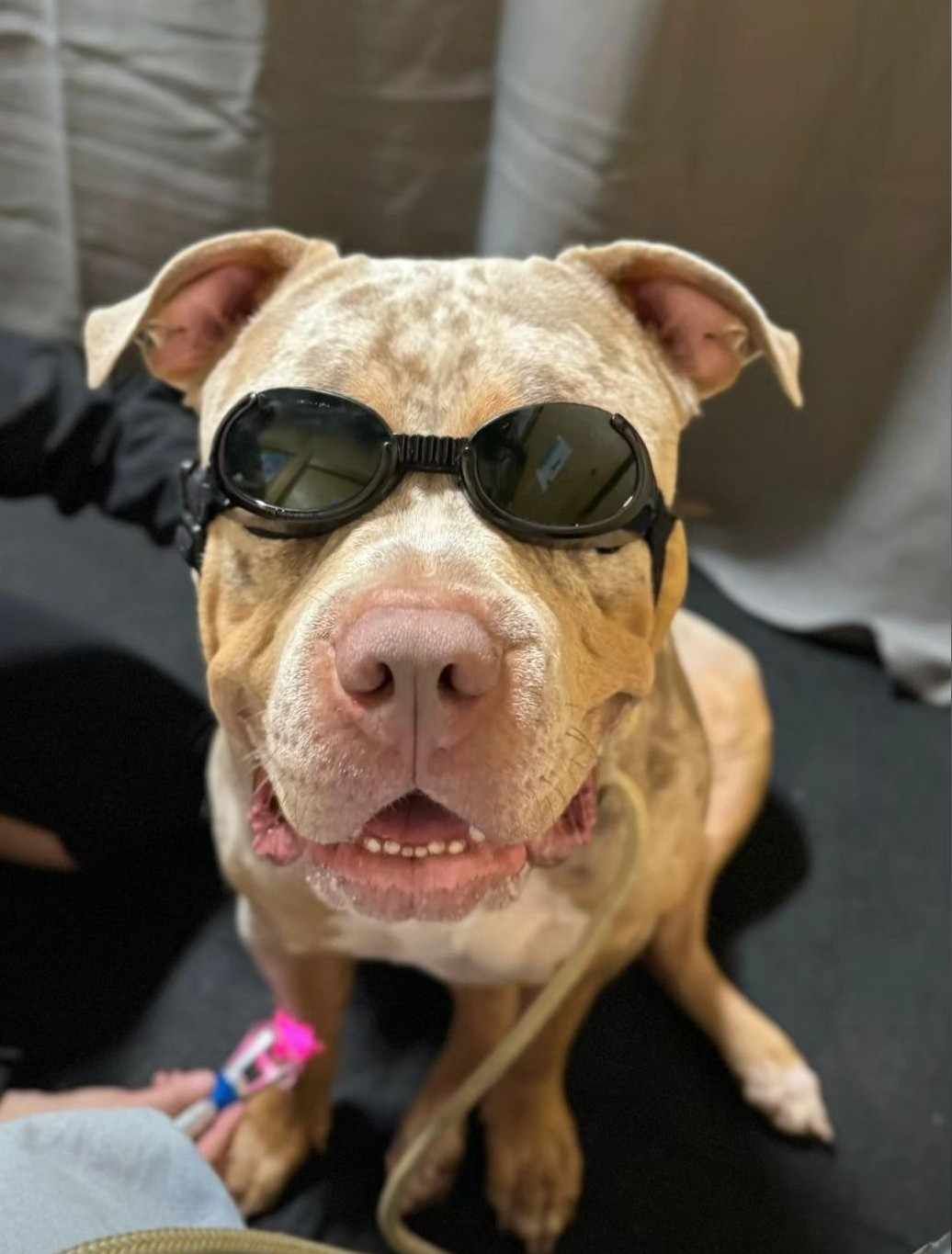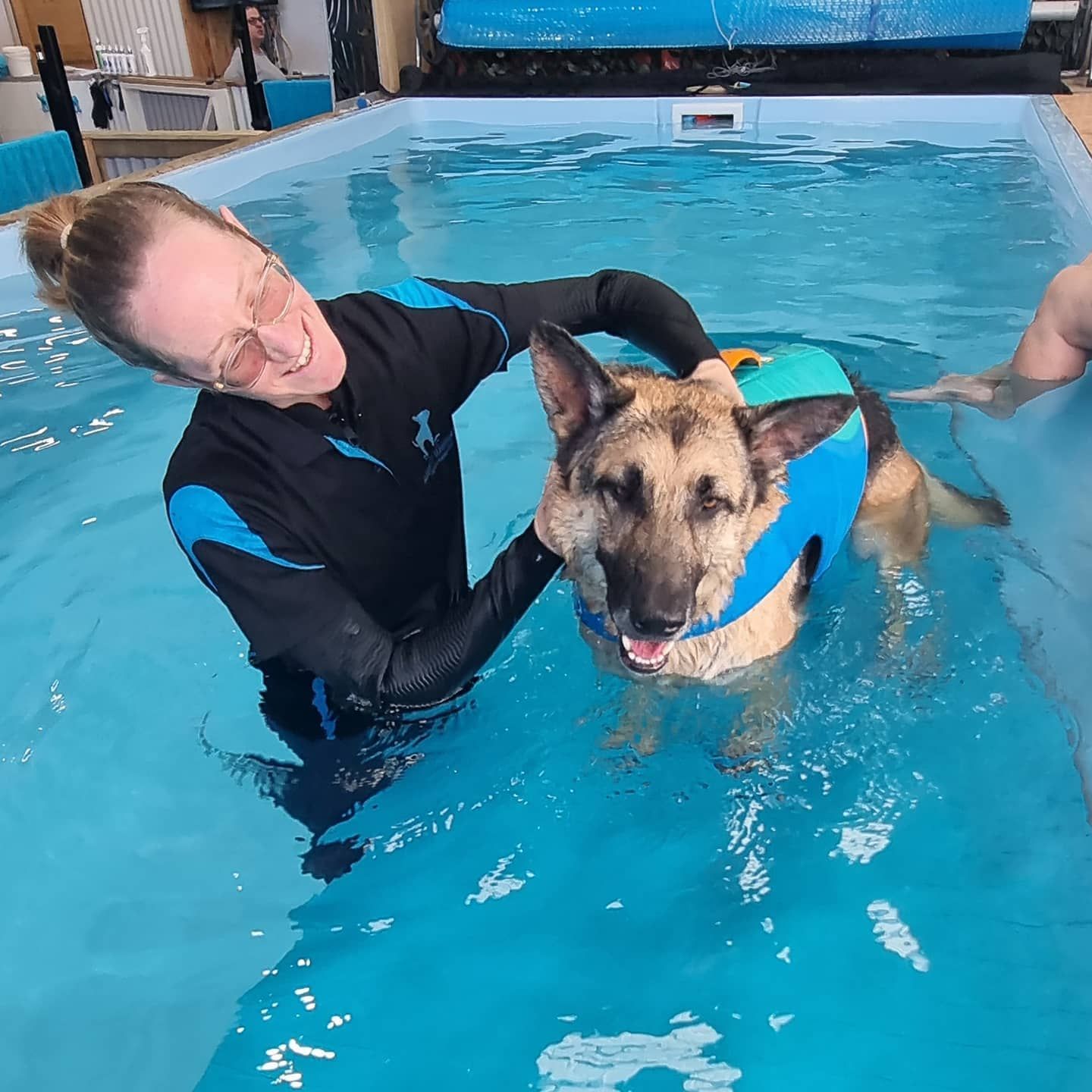What is Fibrocartilaginous Embolism?
Fibrocartilaginous embolism (FCE) is a rare neurological condition that can affect dogs. It occurs when a small piece of fibrocartilage from an intervertebral disc in the spine becomes detached and blocks a blood vessel, leading to ischemia (lack of blood flow) and damage to the spinal cord. FCE most commonly affects the spinal cord in the thoracic (chest) region of dogs, although it can occur in other areas as well.
If you suspect that your dog may be experiencing symptoms of FCE or any other neurological condition, it is important to seek veterinary care promptly for an accurate diagnosis and appropriate treatment.

In this blog post, we dive into the details of this condition, its management, and how canine hydrotherapy can offer hope and healing to dogs experiencing FCE.
How FCE Affects Dogs?
The exact cause of FCE is not fully understood, but it is believed to involve a sudden disruption in blood flow to the spinal cord, possibly due to a clot or an embolism. It is suspected that trauma or injury to the spinal cord may be a triggering factor in some cases, but FCE can also occur spontaneously without any apparent cause.
The signs of fibrocartilaginous embolism in dogs can vary depending on the location and severity of the spinal cord damage, but they often include:
- Sudden onset of pain
- Weakness or paralysis in the hind limbs
- Difficulty walking or standing
- Loss of bladder and bowel control
The clinical signs of FCE can be similar to other spinal cord conditions such as intervertebral disc disease or spinal cord trauma, and diagnostic tests such as magnetic resonance imaging (MRI) or computed tomography (CT) scans may be needed to confirm the diagnosis.
Treatment of fibrocartilaginous embolism in dog may include medications to reduce inflammation, physical therapy to maintain muscle strength and coordination, and management of bladder and bowel function.
In some cases, dogs may require hospitalisation for monitoring and supportive care. Prognosis for recovery can vary depending on the severity of the spinal cord damage, and some dogs may regain partial or full use of their hind limbs with time and appropriate care.
Home Recovery Strategies
There are several things you can do at home to help with their recovery:
Rest
Avoid activities that may exacerbate your dog's symptoms, such as running, jumping, or engaging in strenuous exercise. Provide a quiet and comfortable space for your dog to rest and limit their movement as much as possible.
Medications
Follow your veterinarian's prescribed medication regimen diligently. This may include medications to reduce inflammation and pain, muscle relaxants, and/or other medications to manage your dog's symptoms.
Mobility aids
Depending on the severity of your dog's FCE and their ability to move, your veterinarian may recommend the use of mobility aids such as a sling or harness to assist your dog in walking or provide additional support.
Physical therapy
Your veterinarian may recommend physical therapy to help improve your dog's mobility and aid in their recovery. This may include exercises, massage, and other therapeutic modalities to help strengthen muscles and improve coordination.
Bladder and bowel care
If your dog has difficulty with bladder or bowel control due to FCE, work closely with your veterinarian to manage their needs. This may involve expressing your dog's bladder or adjusting their diet to prevent constipation.
Diet
Follow your veterinarian's dietary recommendations for your dog, which may include a specific type of food or supplements to support their overall health and recovery.
Regular veterinary check-ups
It's important to schedule regular follow-up appointments with your veterinarian to monitor your dog's progress and make any necessary adjustments to their treatment plan.
Hydrotherapy for Dogs with FCE
Hydrotherapy for dogs is a therapeutic approach that involves using water for various medical and rehabilitative purposes to improve a dog's health and well-being. It typically takes place in a controlled environment, such as a pool or underwater treadmill, and is administered by trained professionals.
Hydrotherapy can be beneficial in the management of FCE in several ways:
Pain Relief
Immersing in warm water can ease muscle tension, alleviate pain, and reduce muscle spasms. It also enhances blood circulation to the affected area, aiding healing and diminishing inflammation.
Muscle Relaxation and Flexibility
The buoyancy of water lessens the weight on afflicted limbs, making it simpler to move and stretch muscles. Hydrotherapy facilitates gentle range-of-motion exercises for affected limbs, preventing muscle stiffness and contractures.
Improved Cardiovascular Fitness
Hydrotherapy serves as a low-impact cardiovascular exercise, maintaining heart health without straining affected muscles and joints.
Stress and Anxiety Reduction
Immersion in water induces relaxation and lessens stress and anxiety, which can be valuable in coping with the emotional impact of a chronic condition like FCE.
Rehabilitation and Enhanced Functionality
Hydrotherapy can be integrated into a comprehensive rehabilitation program to enhance functional abilities such as balance, coordination, and gait training.
Takeaway
Hydrotherapy is often recommended by veterinarians as part of a comprehensive treatment plan for dogs with various health issues or as a means of maintaining the overall health and well-being of the dog. However, it's important to consider any contraindications or precautions, such as open wounds or infections, before undergoing hydrotherapy treatment. It's essential to closely follow your veterinarian's instructions to ensure the best possible outcome for your dog's health.










